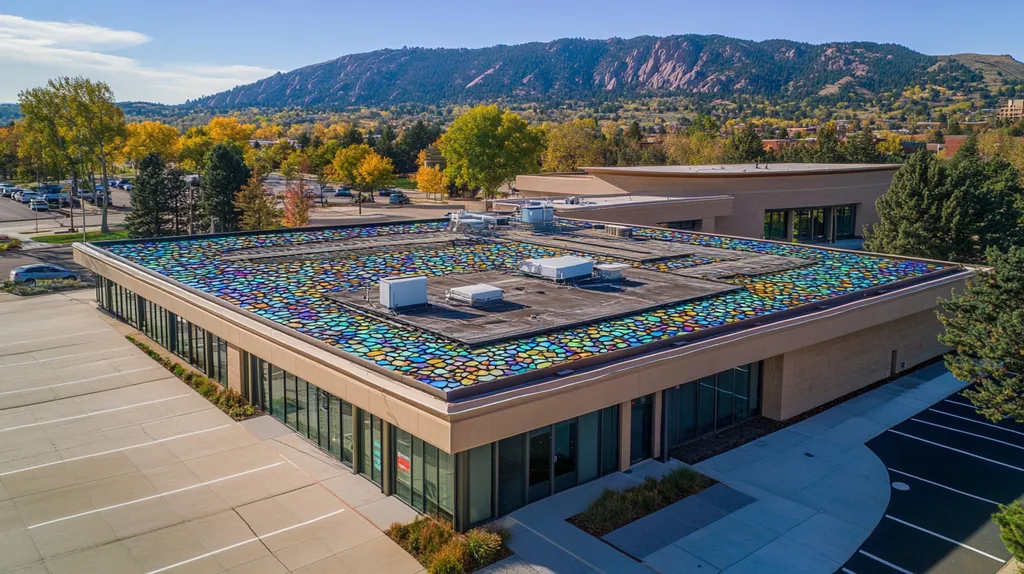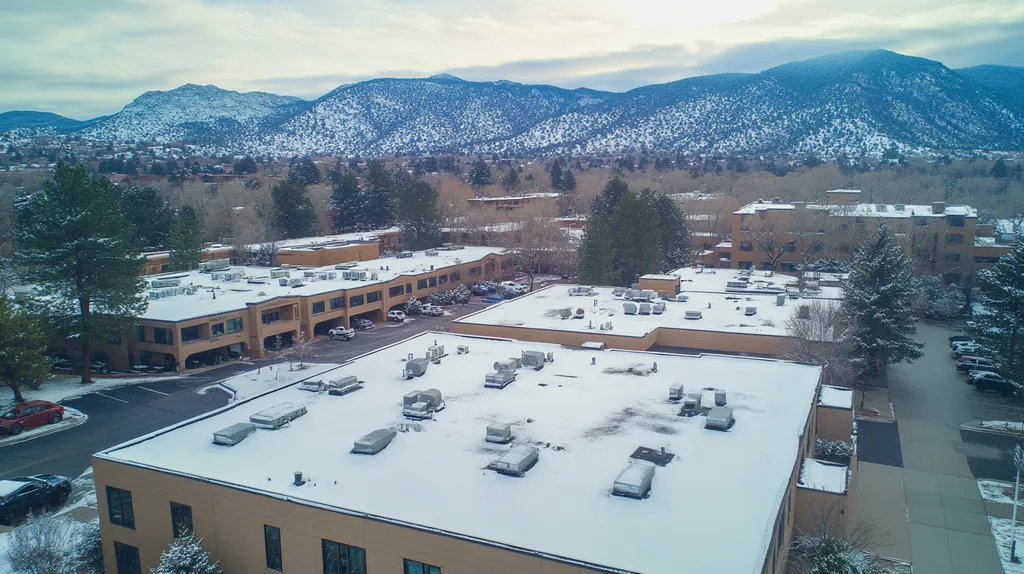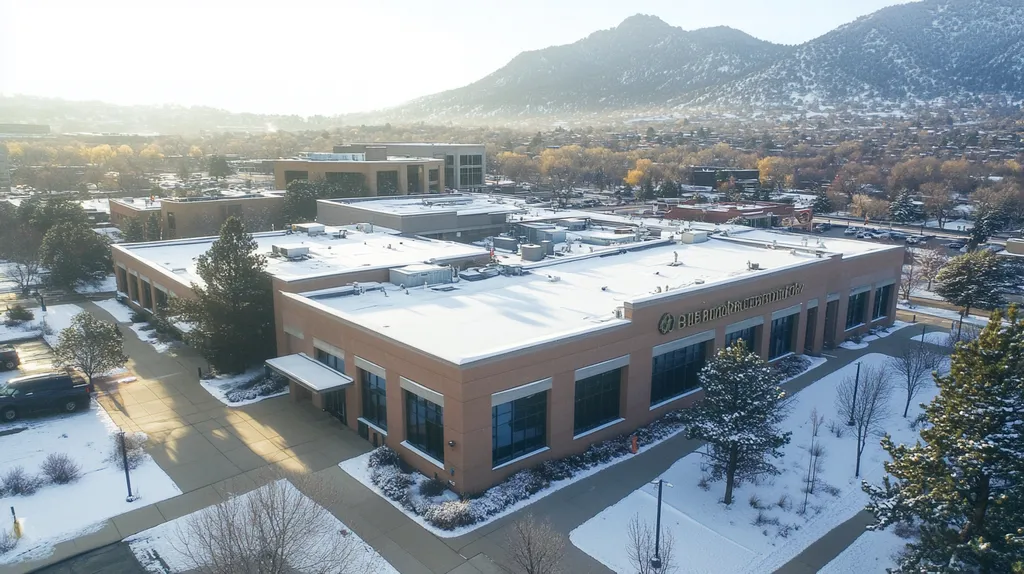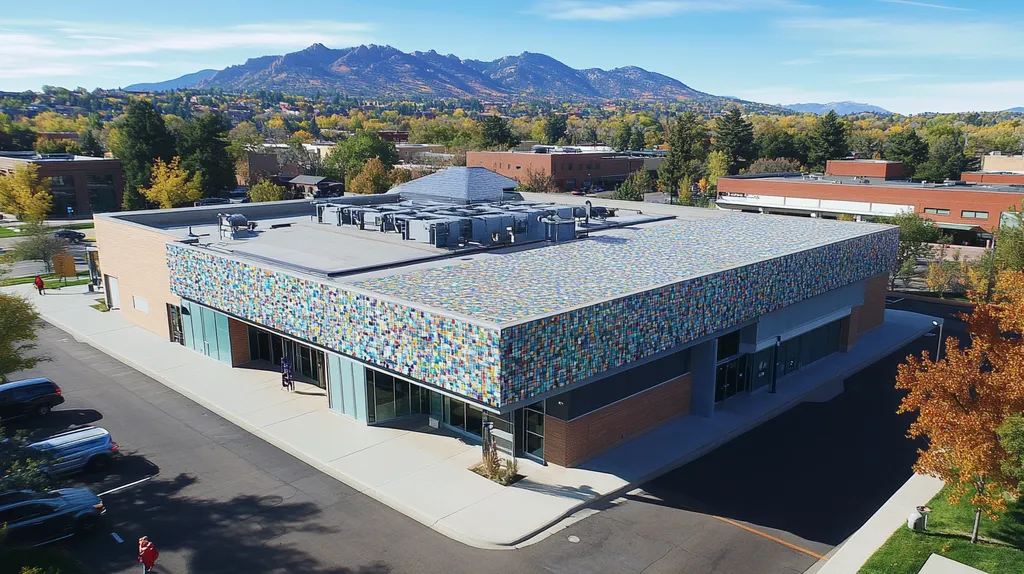In commercial roofing, penetrations represent the single greatest threat to roof longevity, with studies showing they’re responsible for up to 85% of premature failures and emergency repairs.
Every pipe, vent, skylight, and HVAC unit creates a potential vulnerability that can reduce a roof’s expected lifespan by 40% or more when improperly managed.
Despite this reality, widespread misconceptions about penetration maintenance continue to cost property owners millions in preventable repairs while significantly shortening roof life.
This analysis examines the true impact of penetrations on commercial roofs, debunks common myths, and presents evidence-based solutions for protecting your roofing investment.
SECTION 1: COMMON MISCONCEPTIONS
In the world of commercial roofing, few issues are as consistently misunderstood as roof penetrations. Every pipe, vent, skylight, and HVAC unit creates a potential vulnerability that can dramatically reduce a roof’s lifespan. While many property owners focus on membrane quality or insulation values, they often overlook how these necessary openings affect their roofing investment. This oversight leads to premature failures and unnecessary expenses that could be avoided with proper understanding and maintenance.
Myth: Penetrations Do Not Significantly Impact Roof Life
The most dangerous misconception in commercial roofing is that penetrations play only a minor role in roof performance. In reality, these openings represent critical weak points where the majority of roof failures begin.
A single improperly managed penetration can allow water to infiltrate multiple roofing layers, causing damage that extends far beyond the immediate area. The resulting deterioration often remains hidden until significant structural damage has occurred.
Statistics show that up to 80% of all roof leaks occur at penetrations, flashing points, and other roof interruptions rather than in open membrane areas. This makes penetration management one of the most crucial factors in roof longevity.
Even small penetrations, when improperly maintained, can create cascading failures that affect large sections of roofing. The cumulative impact of multiple compromised penetrations can reduce a roof’s expected lifespan by 30% or more.
Misunderstanding Proper Sealing Techniques for Penetrations
Property owners frequently assume that all penetration sealing methods offer equal protection. This dangerous oversimplification ignores the complex interaction between different roofing materials, sealants, and environmental conditions.
Temperature fluctuations cause materials to expand and contract at different rates, creating stress on sealing points. Without proper consideration of these movements, even professionally installed seals can fail prematurely.
Modern roofing systems require specific sealing protocols based on membrane type, penetration material, and local climate conditions. Generic solutions often lead to premature failure and water infiltration.
The choice of flashing materials and installation methods must account for both immediate weatherproofing needs and long-term maintenance requirements. Cutting corners during initial installation inevitably leads to costly repairs later.
False Assumptions About Penetration Maintenance Frequency
Many facility managers operate under the misconception that penetrations require attention only when problems become visible. This reactive approach ignores the gradual deterioration that occurs between inspections.
Environmental factors, including UV exposure, thermal cycling, and chemical exposure, continuously degrade sealing materials. Regular inspection and maintenance are essential to identify and address these issues before failure occurs.
The complexity of modern roofing systems demands a systematic approach to penetration maintenance. Each type of penetration requires specific inspection protocols and maintenance schedules.
Successful penetration management requires detailed documentation and tracking of all maintenance activities. This data helps identify patterns of failure and optimize maintenance intervals for specific building conditions.
Without a proactive maintenance strategy, penetration-related issues often cascade into major structural problems that could have been prevented with routine attention.
SECTION 2: PRACTICAL IMPLICATIONS
Every commercial roof penetration represents a potential failure point that can dramatically impact building integrity and operational costs. Recent studies indicate that penetrations account for over 90% of all roof leaks, making them the single most critical factor in roof performance. Understanding how these vulnerabilities develop, their effects on overall roof integrity, and their response to environmental conditions is essential for protecting your roofing investment.
How Penetrations Create Vulnerable Leak Points
Penetrations disrupt the continuous waterproof barrier that makes up a commercial roof system. Each cut through the membrane creates a potential entry point for water, requiring precise sealing and ongoing attention to maintain watertight integrity.
The interface between different materials at penetration points creates particular challenges. Metal pipes, plastic vents, and mechanical equipment all expand and contract at different rates than the surrounding roofing materials, putting constant stress on seals and flashings.
Modern roofing systems require specialized flashing techniques for each type of penetration. Standard pitch pans and surface sealants often prove inadequate, leading to premature failure and water infiltration.
Even properly installed penetrations require regular inspection and maintenance. Small gaps or cracks can develop over time, allowing moisture to penetrate beneath the surface where damage can spread undetected.
Effects of Penetration Failures on Roof Integrity
When penetration seals fail, the damage extends far beyond the immediate area. Water entering through compromised penetrations can travel significant distances within the roof assembly before showing visible signs of leakage.
The presence of moisture accelerates the deterioration of roofing materials. Insulation becomes saturated, reducing its thermal efficiency and adding unnecessary weight to the roof structure.
Roof leaks can lead to costly repairs, damage to interior finishes and equipment, and potential disruption of business operations. Early detection and repair of penetration issues is crucial for preventing these cascading failures. (source: Aquila Commercial)
Failed penetrations often require extensive repairs that go beyond simple resealing. The surrounding roofing materials may need replacement, and underlying structural elements could require remediation if water damage is extensive.
Impact of Environmental Exposure on Penetration Durability
Environmental factors play a crucial role in penetration performance. UV radiation breaks down sealants and flashing materials, while thermal cycling creates constant stress on connection points.
Freeze-thaw cycles pose particular challenges for penetration integrity. Water trapped in small gaps expands when frozen, widening cracks and compromising seals.
Wind-driven rain and standing water around penetrations accelerate deterioration. Proper drainage and regular cleaning around penetrations become essential maintenance tasks.
Chemical exposure from air pollution, acid rain, or equipment emissions can degrade sealing materials. Regular inspections must account for these environmental factors when assessing penetration condition.
SECTION 3: COST OF MISINFORMATION
The financial implications of mismanaging commercial roof penetrations extend far beyond routine maintenance costs. Studies reveal that penetration-related failures account for up to 60% of total roof replacement costs in commercial buildings. What begins as a simple maintenance oversight can cascade into structural damage, business interruption, and premature roof failure – often cutting expected roof lifespans by 40% or more.
Financial Risks from Neglecting Penetration Maintenance
The true cost of neglecting penetration maintenance often remains hidden until catastrophic failure occurs. A single compromised penetration can allow moisture to infiltrate and damage thousands of square feet of roofing material before detection.
Emergency repairs typically cost 3-5 times more than scheduled maintenance, while also disrupting business operations. These unplanned interventions frequently require overtime labor and rush material delivery, dramatically increasing expense.
Insurance claims related to water damage from penetration failures average $250,000 per incident. Many policies now include specific exclusions for damage resulting from deferred maintenance, leaving building owners fully exposed to these costs.
The ripple effect of penetration failures extends to increased energy costs as wet insulation loses its thermal efficiency. This hidden expense often adds 15-20% to monthly heating and cooling costs.
Costs Associated with Roof Leaks Originating at Penetrations
When penetrations fail, water infiltration can damage inventory, equipment, and interior finishes. A single significant leak event typically results in $50,000 to $150,000 in direct damage repairs.
Business interruption costs often exceed direct repair expenses by 200-300%. Lost productivity, temporary relocations, and customer impacts compound the financial burden of penetration failures.
Mold remediation following water infiltration adds another layer of expense, typically ranging from $15,000 to $30,000 per incident. These costs are rarely covered by standard insurance policies when traced to maintenance neglect.
Legal liability from slip-and-fall incidents or health issues related to mold exposure can push total costs into millions. These secondary risks often emerge months or years after the initial penetration failure.
Long-Term Expense of Improper Penetration Repairs
Quick-fix repairs using improper materials or techniques create a cycle of recurring failures. These temporary solutions typically last less than 25% of the expected service life of properly executed repairs.
The cumulative cost of repeated temporary repairs often exceeds proper installation costs by 300-400%. Each repair attempt further damages the surrounding roof system, expanding the affected area and increasing future repair costs.
Improper repairs accelerate the degradation of adjacent roofing materials, reducing overall roof life by 30-50%. This premature aging forces early replacement of otherwise sound roofing systems.
The compound effect of multiple substandard repairs creates systemic weaknesses throughout the roof assembly. These weaknesses often necessitate complete roof replacement rather than isolated repairs, multiplying the long-term financial impact.
SECTION 4: REALITY CHECK
Hard data reveals that roof penetrations represent the most significant threat to commercial roof longevity, with research showing they are responsible for up to 85% of premature failures. Every pipe, vent, and mechanical unit creates a potential failure point that must be properly managed. Understanding the verified impacts, industry standards, and common failure modes is essential for protecting your roofing investment and avoiding costly repairs.
Verified Impact of Penetrations on Roof Lifespan
Commercial roofs with properly managed penetrations consistently achieve their full expected service life of 20-30 years. The longevity depends heavily on maintaining effective water management systems and preventing moisture intrusion through penetration points. (source: Moser Roofing Solutions)
Statistical analysis shows that each poorly managed penetration reduces overall roof lifespan by 3-5 years. This accelerated deterioration occurs due to water infiltration, insulation degradation, and structural stress around penetration points.
Buildings with high penetration density face increased risk, as each opening creates another potential failure point. The cumulative effect can reduce expected roof life by up to 50% when proper maintenance protocols are not followed.
Modern roofing systems require specialized approaches for each type of penetration. Generic solutions that worked on older roofing systems often fail prematurely on contemporary materials.
Industry Standards for Penetration Installation and Sealing
Current standards mandate specific flashing heights, material compatibility requirements, and drainage considerations for each penetration type. These requirements vary based on roof slope, membrane material, and local climate conditions.
Proper installation must account for thermal movement, structural settling, and long-term maintenance access. Rigid compliance with manufacturer specifications is essential for maintaining warranty coverage.
Modern penetration details incorporate redundant water barriers and positive drainage features. This multi-layer approach provides backup protection when primary seals begin to degrade.
Regular inspection protocols must verify maintained clearances, intact seals, and proper drainage around all penetrations. Documentation of these inspections becomes crucial for warranty claims and maintenance planning.
Common Failure Modes in Roof Penetrations
The most frequent penetration failures stem from improper initial installation rather than material defects. Incorrect flashing heights, incompatible sealants, and poor drainage details account for over 60% of premature failures.
Thermal cycling creates constant stress on penetration seals as different materials expand and contract at varying rates. This movement gradually degrades even properly installed flashings and sealants.
Water pooling around penetrations accelerates deterioration of both the penetration assembly and surrounding roof materials. Proper slope and drainage become critical factors in penetration longevity.
Chemical exposure from equipment emissions, cleaning products, and environmental pollutants can degrade penetration seals. Regular material compatibility checks must be part of maintenance protocols.
UV exposure particularly affects exposed sealants and flashings around penetrations. Modern materials require specific UV-resistant components to maintain long-term performance.
SECTION 5: EVIDENCE-BASED ALTERNATIVES
Research shows that properly managed roof penetrations can extend a commercial roof’s lifespan by 40-60% compared to buildings with inadequate penetration protocols. This striking difference stems from implementing proven installation methods, selecting appropriate materials, and maintaining rigorous inspection schedules. Understanding and applying these evidence-based practices represents the difference between premature roof failure and achieving maximum service life.
Best Practices for Installing and Flashing Penetrations
Modern penetration installation demands precise coordination between trades to ensure proper positioning and support. Each opening must be precisely sized and reinforced before membrane installation to prevent future settling or misalignment.
Pre-fabricated flashing systems have revolutionized penetration protection by eliminating field-fabrication variables. These standardized components provide consistent performance and simplified installation when properly matched to the roof system.
Height requirements for penetration flashings must account for local weather patterns and potential snow accumulation. Standard minimum heights range from 8 inches in moderate climates to 12 inches or more in areas with heavy snowfall.
Integration with the primary roof membrane requires careful attention to material compatibility and overlap dimensions. Modern systems typically specify minimum 6-inch overlaps with reinforced corner details at all transitions.
Materials and Methods Proven to Extend Roof Life Around Penetrations
The longevity of commercial roofs depends heavily on material selection and proper installation methods. Modern PVC and TPO membranes, when correctly integrated with penetration details, can deliver 20-30 years of reliable service. (source: Moser Roofing Solutions)
Liquid-applied flashing systems have emerged as superior solutions for complex penetrations. These materials conform perfectly to irregular shapes while providing seamless integration with the primary roof membrane.
Reinforced corner patches and target patches significantly strengthen penetration flashings at critical stress points. This redundant protection helps prevent failures even when primary seals begin to age.
Modern sealants engineered specifically for roof applications offer superior UV resistance and flexibility. These materials maintain their protective properties far longer than traditional caulks or mastics.
Regular Inspection Protocols to Manage Penetration Risks
Effective penetration management requires systematic inspection protocols focused on early detection. Monthly visual checks combined with quarterly detailed inspections create a comprehensive monitoring system.
Digital documentation tools now enable precise tracking of penetration conditions over time. This data helps identify developing issues before they progress to active leaks.
Thermal imaging and moisture scanning technology can detect hidden water infiltration around penetrations. These non-invasive methods allow early intervention before damage spreads through the roof assembly.
Inspection schedules must adapt to seasonal challenges and local weather patterns. Additional checks following severe storms or extreme temperature events help prevent small issues from escalating into major failures.
Training maintenance staff to recognize early warning signs creates an additional layer of protection. Daily observations can catch developing issues between scheduled professional inspections.
SECTION 6: TEST AND VERIFY
Modern testing and verification methods have revolutionized how we detect and prevent penetration-related roof failures. Studies show that 85% of catastrophic roof failures begin with small, undetected leaks around penetrations that could have been identified through proper testing. Without systematic verification protocols, these minor issues cascade into major structural problems, often reducing roof lifespan by 40% or more.
Techniques for Detecting Penetration-Related Leaks
Electronic leak detection (ELD) has emerged as the gold standard for identifying penetration failures before visible damage occurs. This technology can pinpoint moisture infiltration within millimeters, allowing precise repairs that preserve roof integrity.
Capacitance testing provides crucial data about moisture levels within roofing assemblies near penetrations. This non-destructive method identifies trapped moisture that traditional inspections would miss, preventing extensive damage to insulation and deck materials.
Dye testing remains valuable for verifying specific leak paths around complex penetration configurations. This method traces water movement through the roofing assembly, revealing hidden channels that can compromise large sections of roofing.
Vacuum testing of penetration seals identifies potential failure points before actual leaks develop. This proactive approach catches degrading seals early, when repairs are still simple and cost-effective.
Roof Moisture and Integrity Testing Methods near Penetrations
An effective water management system is crucial for preventing premature degradation of underlying roof materials, especially around penetrations where water often pools and compromises membrane integrity. Regular moisture mapping helps identify areas where drainage improvements can prevent accelerated deterioration. (source: Moser Roofing Solutions)
Nuclear moisture detection provides detailed subsurface moisture content data without compromising the roof membrane. This technology helps track moisture migration patterns around penetrations, enabling targeted interventions before widespread damage occurs.
Impedance testing reveals changes in roofing material composition caused by moisture infiltration. This method helps identify deteriorating conditions around penetrations even when surface indicators appear normal.
Core analysis, while invasive, provides definitive data about moisture damage levels and material degradation near penetrations. Strategic sampling helps calibrate electronic testing methods and verify suspected problem areas.
Using Infrared and Other Technologies to Verify Penetration Seals
Advanced infrared imaging systems can detect temperature variations that indicate moisture infiltration or insulation saturation around penetrations. Modern equipment provides detailed thermal mapping that reveals problems invisible to the naked eye.
Ultrasonic testing identifies microscopic gaps in penetration seals before they develop into active leaks. This technology detects air infiltration points that often precede water infiltration, allowing preventive maintenance.
Digital mapping systems integrate multiple testing methods into comprehensive roof condition assessments. This technology creates detailed profiles of each penetration’s performance history and projected maintenance needs.
Automated monitoring systems provide continuous data on penetration seal performance. These systems alert facility managers to developing issues before they escalate into major problems, enabling proactive maintenance scheduling.
The Bottom Line
With up to 85% of commercial roof failures originating at penetrations, the industry can no longer afford to perpetuate myths about their impact on roof longevity.
Every unmanaged penetration reduces expected roof life by 3-5 years, while proper protocols can extend service life by 40-60%.
The financial stakes are clear: penetration-related failures now account for 60% of total roof replacement costs in commercial buildings.
Modern testing methods, materials, and installation protocols have eliminated the technical barriers to proper penetration management.
The evidence shows that only systematic, proactive approaches to penetration maintenance will protect the substantial investment that commercial roofing represents.
FREQUENTLY ASKED QUESTIONS
Q. Do roof penetrations significantly impact commercial roof lifespan?
A. Yes, roof penetrations can dramatically reduce the lifespan of a commercial roof. They are critical weak points where leaks often occur, leading to extensive damage and increased repair costs. Proper management is essential to maintain roof integrity and extend its life.
Q. How do penetrations create leak points in industrial roofs?
A. Each penetration disrupts the waterproof barrier of the roof, becoming a potential entry point for water. Proper sealing and ongoing maintenance are essential to ensure water doesn’t infiltrate through these vulnerable areas, which could lead to extensive internal damage.
Q. What are the costs of not maintaining roof penetrations?
A. Neglecting penetration maintenance can lead to major expenses, including emergency repairs and significant damage to the roofing system. Delaying maintenance often results in much higher costs compared to regular upkeep, ultimately impacting your financial resources.
Q. What are common failure modes for penetrations in commercial roofs?
A. Common failure modes include improper installation, poor drainage, and material degradation. These failures often result from inadequate attention to design and construction standards, leading to leaks and damage that compromise the entire roof system.
Q. What best practices should I follow for sealing roof penetrations?
A. Best practices include using appropriate flashing methods, selecting high-quality materials, and ensuring proper installation techniques. Regular inspections and maintenance should also be scheduled to verify the integrity of seals and prevent leaks.
Q. What testing methods help prevent leaks around penetrations?
A. Effective methods include electronic leak detection, capacitance testing, and dye testing. These technologies identify moisture infiltration before it becomes visible, allowing for timely repairs and maintaining the roof’s overall integrity.
Q. Why is regular inspection crucial for roof penetrations?
A. Regular inspections help detect early signs of wear or damage around penetrations. Timely identification allows for proactive measures, preventing minor issues from escalating into major leaks or structural failures that can significantly affect roof lifespan.









